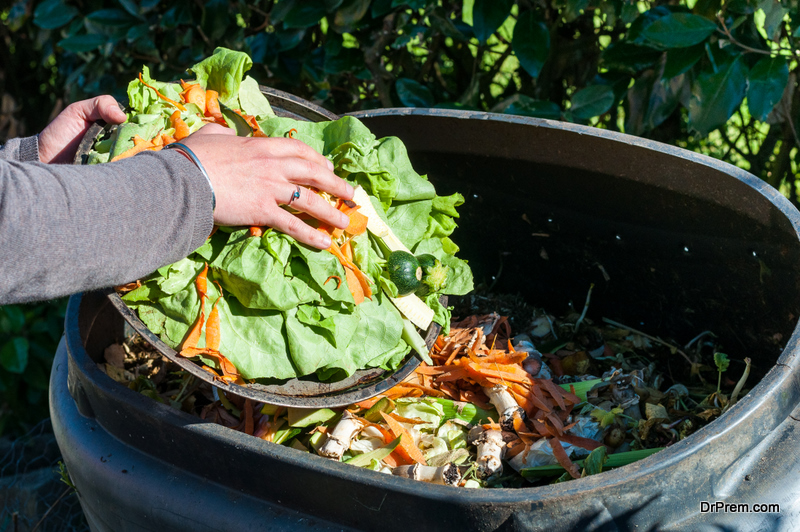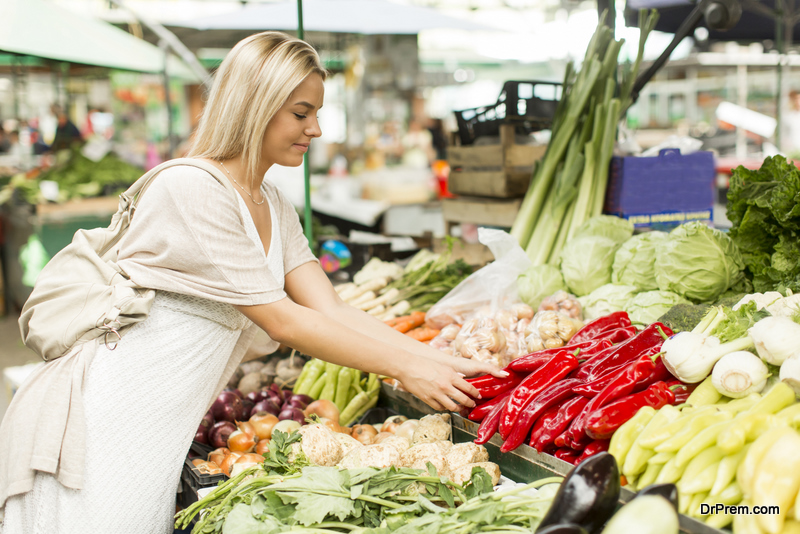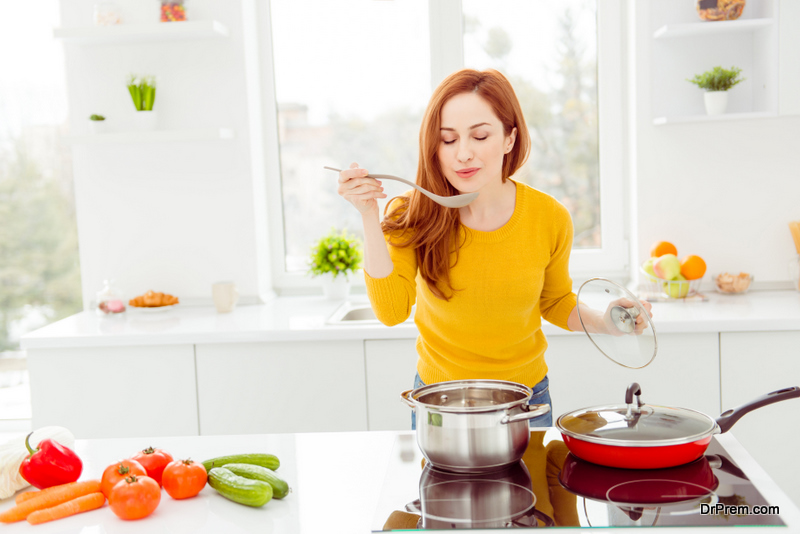At the end of the day, all of our food comes from the Earth. Unfortunately, however, many of the ways that we grow and consume food today take far more from our planet than they give back. While regenerative agriculture and other eco-friendly growing techniques are becoming more popular, conventional agriculture still has a stranglehold on our broken global food system.
That’s why those who want to clean up and green up their lifestyle would be well advised to start in the kitchen. The corporate food system plays itself out on a micro-scale in our kitchens and results in huge amounts of food and packaging waste. All of that filters up to the macro level, where profits enrich big agribusiness and plastic chokes the oceans.
Most of us don’t have the resources to reshape whole food systems by ourselves, but learning how to be more eco-friendly is something anyone can do. Ready to take your kitchen back from waste and pollution? These seven tips will get you started on the path.
1. Say no to single-use plastic
 Many of us are a little bit addicted to plastic in the kitchen. From ziploc bags to plastic wrap, it’s so easy to reach for single-use plastic, but there are more sustainable ways to do the same things for only a little more money and effort. Reusable containers are the perfect place to start.
Many of us are a little bit addicted to plastic in the kitchen. From ziploc bags to plastic wrap, it’s so easy to reach for single-use plastic, but there are more sustainable ways to do the same things for only a little more money and effort. Reusable containers are the perfect place to start.
First, invest in a set of reusable food storage containers. Get glass containers if you can. They last basically forever and are better for the environment than plastic containers. Then, investigate your options for reducing the amount of plastic used in your groceries. Opt for paper bags at the grocery store or bring your own reusable shopping bags. Finally, whenever possible, choose food and produce that’s either unpackaged or packaged using sustainable materials.
2. Cook at home instead of ordering takeout
Takeout orders are a major source of packaging waste. To-go food orders often come packaged in numerous individual plastic or styrofoam containers, and they frequently include plasticware that gets thrown away immediately. Cooking at home generates much less waste, and it’s often healthier as well.
If you do order takeout, ask to get your order without extra condiments or plasticware and in the minimum amount of packaging. Give some thought to how hungry you actually are, too. Many people order more than they need and end up throwing away the leftovers. With huge amounts of food going to waste around the world every day, we all need to do our part to reduce it.
3. Start composting your kitchen waste
 Much of the waste you produce in your kitchen can go into a compost bin instead of the trash. Fruits, vegetables, coffee grounds, eggshells and more can all create rich compost that fertilizes soil, and that’s not even taking into consideration products like compostable phone cases that have recently hit the market. (If you’re not producing enough compostable waste, it’s a good sign that you might want to re-evaluate your diet and add more fresh foods.)
Much of the waste you produce in your kitchen can go into a compost bin instead of the trash. Fruits, vegetables, coffee grounds, eggshells and more can all create rich compost that fertilizes soil, and that’s not even taking into consideration products like compostable phone cases that have recently hit the market. (If you’re not producing enough compostable waste, it’s a good sign that you might want to re-evaluate your diet and add more fresh foods.)
You should know a little bit about composting before you get started. Read up on the rules of composting for beginners and pay particular attention to things you shouldn’t put in compost, such as meat and dairy products. It’s also a good idea to get familiar with the latest composting tech, like the brand-new Lomi automatic composter.
4. Reduce your meat consumption, or choose ethically produced meat
Meat is a touchy topic for many people, but the fact is that the way meat is produced today makes it one of the least sustainable food sources. Reducing or eliminating meat in your diet is one of the most effective ways that you can improve your kitchen’s sustainability, and it can actually be less painful than you might imagine with the variety of delicious plant-based recipes available today.
If giving up meat isn’t on the table for you, look into how you can buy ethically produced meat from local farmers. Many farms today are rediscovering the art of raising grass-fed, free-range and otherwise sustainably-produced meat. Don’t know where to look? If you have a local butcher shop, that’s a great place to start, or you can use the ASPCA’s Shop With Your Heart list of ethical meat producers.
5. Prioritize local and seasonal produce in your shopping
 There’s nothing natural about eating peaches in Massachusetts in the dead of winter, and the globalized produce economy has more harmful effects than you might realize. From human trafficking of migrant fruit pickers to the widespread use of pesticides and GMOs, big agriculture’s dominance means that even your produce isn’t always safe. That’s a big part of why the local produce movement has taken off in recent years.
There’s nothing natural about eating peaches in Massachusetts in the dead of winter, and the globalized produce economy has more harmful effects than you might realize. From human trafficking of migrant fruit pickers to the widespread use of pesticides and GMOs, big agriculture’s dominance means that even your produce isn’t always safe. That’s a big part of why the local produce movement has taken off in recent years.
Here’s the big secret about local and seasonal produce: It tastes way better. By adjusting your eating habits to make local and seasonal foods your staples, you’ll make more delicious food while helping the environment. Getting to know your local food scene through events like farmers markets is also an excellent way to support local businesses and put money back into your community, rather than sending your food dollars to an agribusiness corporation.
6. Grow your own fruits and vegetables
You can’t get more local than growing your own vegetables and fruits in a garden. When you grow your food, you can be sure that it’s free of pesticides and GMOs, and you’ll learn a valuable skill that our consumer-oriented food economy generally doesn’t teach. Plus, there are more ways to pull it off than you might realize, even if you don’t have a green space that’s suitable for gardening.
An herb garden offers an easy way to start small. It’s easy to start one on a deck or balcony. If you have a little more room, there’s a whole array of easy foods to grow like tomatoes, carrots, greens, peppers and summer squash. Compost, as we mentioned earlier, makes a great addition to your garden by creating more fertile and productive soil.
Article Submitted By Community Writer




